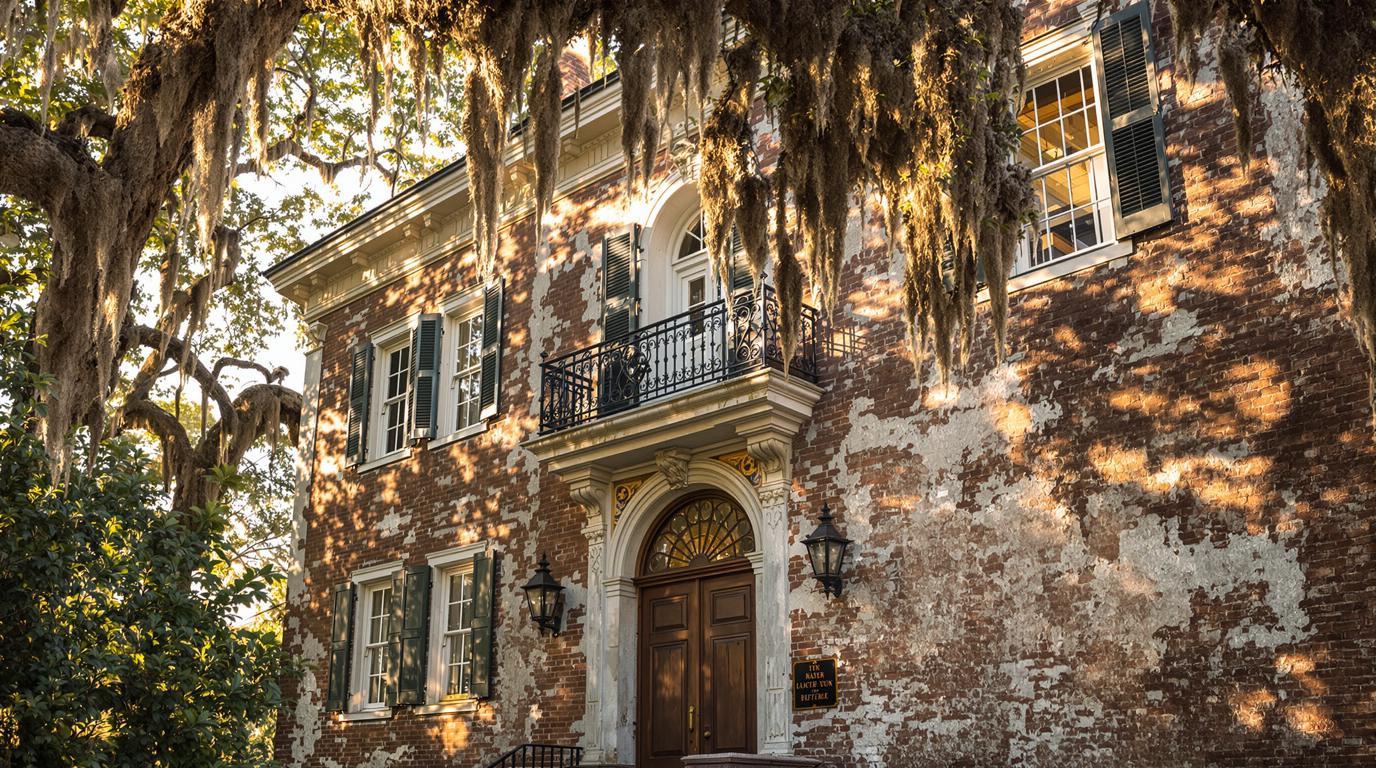The winding, verdant path seemed to vanish into itself as I rounded the final curve, revealing a sepia-toned building that appeared locked in another century. This wasn’t the Charleston most visitors encounter—with its horse-drawn carriages and antebellum mansions—but the quietly preserved Aiken-Rhett House, standing defiantly unrenovated since 1858. While tourists flocked to the city’s manicured historic district a mile south, I found myself alone in this time capsule, confronting both the elegance and brutal inequities of the American South.
Where preserved ruins tell deeper stories than restored grandeur
Charleston’s tourism boom—a record 7.9 million visitors in 2023—has transformed the city’s historic district into a postcard-perfect panorama of restored mansions and boutique hotels. But venture just north of Calhoun Street, and a different Charleston emerges: one where history isn’t polished but preserved in its complex truth.
“We don’t restore, we conserve,” explains Grahame Long, curator at the Historic Charleston Foundation. “Every crack, every peeling wallpaper strip tells a story about the people who lived and worked here—both the wealthy owners and the enslaved people who made their lifestyle possible.”
This philosophy of preservation over restoration offers travelers a more authentic window into Charleston’s contradictory past than the glossier alternatives found in travel brochures.
Encountering the unvarnished past through hidden doorways
The urban plantation hiding in plain sight
The Aiken-Rhett House Museum stands as Charleston’s most intact antebellum urban complex, with original outbuildings that housed enslaved workers preserved rather than reimagined. Unlike properties where slave quarters have been converted to gift shops or romanticized, these spaces retain their stark, unsettling reality.
Visiting on a Tuesday morning means having this extraordinary site nearly to yourself. The self-guided audio tour doesn’t shy away from difficult truths, allowing visitors to move at their own pace through rooms where the walls themselves seem to hold centuries of whispered conversations.
The forgotten cemetery beneath your feet
Most tourists never discover that beneath the unassuming parking lot at 99 Anson Street lies the final resting place of approximately 36 enslaved Africans. The Anson Street African Burial Ground, accidentally uncovered during construction in 2013, reveals Charleston’s layers of hidden history.
The small memorial marker stands in stark contrast to the grand monuments elsewhere in the city. Yet this unassuming site provides a more profound connection to Charleston’s past than many of its more celebrated attractions, particularly when you visit during the monthly community remembrance ceremonies held at sunrise on the first Saturday of each month.
Savoring authentic Gullah Geechee flavors beyond tourist rows
Charleston’s culinary scene has exploded in recent years, but for a truly authentic taste of local culture, I found myself at Bertha’s Kitchen in North Charleston. This James Beard Award-winning “American Classic” serves up Gullah Geechee cuisine—the distinctive cooking tradition developed by descendants of enslaved Africans along the coastal Southeast.
The okra soup hits your palate with an earthy depth that comes from generations of passed-down knowledge, not culinary school training. While waiting for my red rice and fried chicken—served on a paper plate with zero pretension—I struck up a conversation with a construction worker who has eaten lunch here “every Tuesday since 1989.” The line of locals stretching out the door tells you everything you need to know about its authenticity and value.
Navigating Charleston’s historical complexities with respect
Timing your explorations
Visit these alternative sites Tuesday through Thursday mornings to avoid both weekend crowds and cruise ship arrivals. North Charleston locations like Bertha’s Kitchen are busiest during lunch rush (noon-1:30 p.m.), so arrive by 11:30 or after 2:00 for a more relaxed experience.
Transportation considerations
While downtown sites are walkable, exploring beyond the historic district requires transportation. The DASH shuttle connects some locations, but rideshare services offer the most flexibility for reaching North Charleston destinations, typically costing $12-18 one-way from downtown.
Beyond the horse-drawn carriages lies the real Charleston
As I left Bertha’s Kitchen, the afternoon sun casting long shadows across its faded blue exterior, I realized that Charleston’s true character resides not in its picture-perfect facades but in these overlooked corners where history remains honest rather than curated. Like hidden Greek islands with ancient cultural heritage, these places preserve authenticity by remaining slightly beyond the mainstream tourist path.
The city’s complex history shares parallels with African lakes facing environmental challenges—both represent fragile ecosystems where preservation efforts determine whether future generations will experience their unique value. For travelers willing to step beyond the manicured historic district, Charleston offers a sacred connection to the past that no horse-drawn carriage tour can provide.
